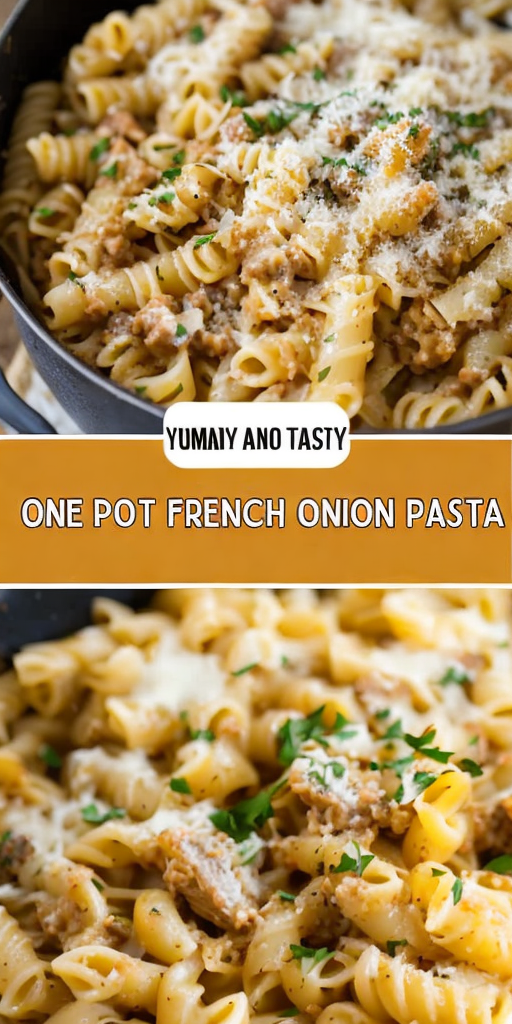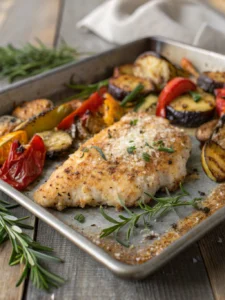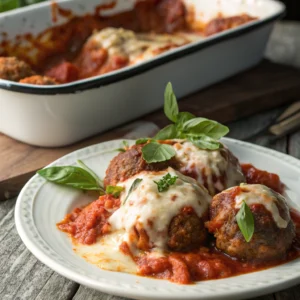Easy One Pot French Onion Pasta: A Delicious Comfort Dinner in 30 Minutes
Imagine the rich, savory aromas of classic French onion soup capturing your senses, now imagine those same delightful flavors cloaking tender pasta strands in a delectable sauce. That’s exactly what this Easy One Pot French Onion Pasta delivers. This comforting dish merges the deeply caramelized notes of onions with a creamy, cheesy pasta base, creating a cozy meal that is both satisfying and warming, perfect for a quick weeknight dinner.
Boasting a flavor-rich profile, the Easy One Pot French Onion Pasta quickly becomes a family favorite with its velvety texture and delightful crunch from the melted cheesy topping. The preparation simplicity, taking only 30 minutes from start to finish, makes it the ideal choice for those evenings when you’re craving something hearty yet easy to whip up. Let’s dive into what makes this pasta dish not only mouthwatering but also incredibly practical.
Quick Recipe Highlights
- Flavor Profile: Savory caramelized onion flavor weaves perfectly with the rich, creamy sauce.
- Texture: Velvety pasta coated in a smooth sauce, topped with gooey, melted cheese for a crispy finish.
- Aroma: Rich, sweet onion scent complements the toasty cheese aroma, lifting spirits the moment it hits your nose.
- Visual Appeal: Golden-brown cheese crust over creamy pasta, inviting with its rustic, homely charm.
- Skill Level Needed: Perfect for beginners; straightforward steps simplify complex flavors.
- Special Equipment: A large, heavy-bottomed saucepan or pot for even cooking.
Recipe Overview
- Difficulty Level: Suitable for all cooking levels, focusing on manageable techniques like sautéing and simmering to develop flavors efficiently.
- Category: Comfort food perfect for lunch, dinner, or a cozy night in, offering heartiness in every bite.
- Cuisine: Inspired by French tradition, reimagined with an Italian twist by incorporating pasta.
- Cost: Budget-friendly, utilizing pantry staples and seasonal ingredients to deliver gourmet taste at everyday prices.
- Season: Perfect for fall and winter, when the warmth of slow-cooked flavors is most appreciated.
- Occasion: Ideal for casual family dinners, movie nights, or entertaining guests with a touch of rustic elegance.
Why You’ll Love This Recipe
The Easy One Pot French Onion Pasta entices with its taste and texture, blending the savory and sweet perfection of caramelized onions with creamy pasta. It’s a comfort food that celebrates simplicity while delivering complex flavors. The dish’s velvety sauce clings to the pasta, ensuring every forkful is brimming with flavor. Coupled with cheese, it forms a satisfying crust that adds a delightful contrast in texture.
One of the primary benefits of this recipe is its sheer convenience. Gone are the days of juggling multiple pots and pans; this one-pot wonder streamlines the cooking process without compromising on taste. You’ll easily transform basic ingredients into a sophisticated meal in just 30 minutes, leaving time to enjoy the evening.
In terms of nutrition, while packed with indulgent ingredients, there are opportunities to tweak the recipe according to dietary needs. Options to incorporate whole-grain pasta or low-fat cheeses offer a lighter variant while maintaining the mouth-watering essence of the dish. This recipe enables mindful eating without sacrificing flavor.
Socially, this dish shines as a conversation starter at gatherings, its impressive aromas and presentation drawing friends and family together. It invites communal dining where stories and laughter flow as freely as the food. The memorable experience it creates becomes a staple narrative in family cooking tales.
Cost-wise, using readily available and affordable ingredients, this recipe is accessible to most home cooks. It lays ground for creativity if specific ingredients aren’t at hand, allowing substitutions to suit what’s in your pantry. This financial versatility makes it an attractive option for budget-conscious meal planning.
Historical Background and Cultural Significance
This recipe draws its roots from the iconic French onion soup, a culinary classic originating from France’s rich tapestry of regional dishes. Historically, French onion soup was born of necessity, crafted by resourceful cooks who transformed humble onions into a comforting, hearty dish during tough times.
Onions, abundant and inexpensive, were cooked slowly to bring out their natural sweetness, a hallmark of French cooking techniques that emphasizes the transformation of simple ingredients. This cooking approach is lauded as “paysanne” or peasant style, turning basics into gastronomic experiences.
Over the centuries, this soup has evolved, growing in global popularity as chefs and home cooks introduce variations. The essence remains—deep, caramelized onions with a melted cheese topping—but new iterations like our easy pasta dish offer modern conveniences and interpretations.
Regionally, France’s culinary influence can be seen in adaptations of this dish across the globe. From the beefy strains of Italy’s pasta traditions to international versions featuring local cheeses, each twist paints a picture of cultural fusion reflecting local preferences and available resources.
Ingredient Deep Dive
The star ingredient, onions, bring historical and nutritional depth. Used globally, onions are fundamental to cooking, celebrated for their ability to infuse dishes with sweetness and depth. They are not only versatile but also a source of vitamin C, antioxidants, and dietary fiber, promoting health alongside taste.
Choosing the right onions enhances your dish. Opt for yellow onions known for their balance of sweetness and pungency. Storage in a cool, dry place preserves their quality. If unavailable, sweet onions serve as substitutes, offering a milder profile for those sensitive to strong flavors.
The pasta acts as this recipe’s canvas, offering structure and absorbing flavors. Whole-grain alternatives are enriched with fiber and provide a nuttier flavor, making them a healthier selection. Stored in airtight containers, pasta retains its freshness, with gluten-free options available for dietary needs.
Additions like cheese, selected for its meltability and sharpness, contribute to the creamy aspect of your sauce. Hard cheeses like Gruyère or cheddar offer both depth and a pleasant, golden crust when broiled. Keeping cheese refrigerated in airtight packaging maintains flavor, with pre-shredded options as a time-saving substitute.
Common Mistakes to Avoid
- Using high heat: Keep the temperature low to medium when caramelizing onions to prevent burning.
- Overcooking pasta: Ensure pasta is cooked al dente; it should be tender yet still firm to the bite.
- Skipping the deglaze: Always deglaze the pot to incorporate flavorful onion bits into the sauce.
- Inadequate seasoning: Don’t forget to taste and adjust salt and pepper during cooking.
- Mismatched cheese: Use cheese known for melting to ensure a smooth, cohesive sauce.
- Adding too much liquid: Start with less liquid, gradually adding more to reach desired sauce consistency.
- Rushing the onions: Patience is key; let onions slowly caramelize to enhance their sweetness and complexity.
- Ignoring aroma: Use your nose along with taste to gauge flavors evolving during cooking.
Essential Techniques
Caramelizing onions is foundational—an essential skill to master for deepening flavor. Cook onions slowly over low heat, stirring occasionally, until they turn golden brown and sweet. Avoid high heat as it can lead to bitterness or burning. You’ll know it’s perfect when the aroma shifts from raw to sweet, and the onions appear translucent with a golden hue.
Deglazing is another technique crucial for creating a flavorful sauce. As onions cook, fond—flavorful bits—build up on the pot’s bottom. Pouring stock or water into the pan and scraping up the fond incorporates these flavors. It’s a culinary step that captures depth, intensifying the sauce with minimal effort but maximum flavor reward.
Pro Tips for Perfect Easy One Pot French Onion Pasta
Use a wide, heavy-bottom pot to allow even heating and space for pasta to cook without sticking. This ensures uniform caramelization and sauce consistency.
Slightly undercook the pasta if planning to prepare ahead; it will finish cooking when reheated, preventing sogginess. This tip is particularly useful for maintaining texture when serving later.
Consider mixing different cheese types for nuanced flavors; a sharp cheddar with a nutty Emmental, for instance, creates a complex taste profile while maintaining meltability.
Adding a splash of balsamic vinegar or a pinch of sugar can elevate onions’ natural sweetness, harmonizing the overall flavor and counterbalancing savory elements.
If you want to add protein, consider browned sausage or tender chicken bites, enhancing both richness and satisfaction.
To make it extra aromatic, toss in fresh herbs like thyme or rosemary during cooking to infuse the sauce with their fragrant oils without overpowering the onion’s character.
Variations and Adaptations
Regional variations may include Italians using a bit of pancetta cooked with onions or French chefs introducing a splash of white wine for acidity. Such twists showcase the region’s unique flair while staying true to the core flavors.
Seasonal adaptations might see this pasta enriched with winter vegetables like roasted squash or sweet peas, balancing the dish’s warmth with fresh notes that vary by season.
For dietary modifications, replace pasta with spiralized vegetables such as zucchini or gluten-free pasta for gluten intolerances, maintaining a hearty quality with adjusted textures and nutritional values.
Flavor variations are easily achieved with protein. Substitute with bacon for smokiness or mushrooms for an earthy undertone. Each swap subtly shifts the dish’s personality without compromising satisfaction.
Texture modifications can include adding crunchy breadcrumbs or crispy pancetta as a topping, offering a textural surprise upon bite that contrasts with the creamy pasta below.
Presentation alternatives abound; serve family-style in a large dish or plated individually with extra cheese crisps or fresh herbs as garnish, tailoring it to both casual and formal settings.
Serving and Presentation Guide
Plating techniques enhance dining experience; consider serving in a wide, shallow bowl to showcase the melting cheese and earthy colors. The pasta should be layered visibly beneath, creating visual appetite appeal.
Garnishing ideas can incorporate finely chopped parsley or chives for bright, fresh color. A light sprinkle of grated parmesan adds a final touch of flavor balance, harmonizing visual and taste elements.
Traditional accompaniments embrace sliced crusty bread, perfect for sopping up any extra sauce, while catering to the rustic, homey essence of the meal.
Modern serving suggestions might include side salads featuring vinaigrette-dressed greens, providing a refreshing contrast to the rich pasta, elevating the dish to a balanced course.
Temperature considerations are key—serve hot from the pot to ensure cheese remains melted and sauce stays luscious. If cooled slightly, warming in a low oven restores ideal dining temperature.
Portion control tips suggest serving modest portions alongside sides to evenly distribute the dish’s richness without overwhelming taste buds, optimizing enjoyment while controlling intake.
Wine and Beverage Pairing
Traditional wine pairings lean towards a robust red, such as a Cabernet Sauvignon or a vintage Bordeaux; their tannins cut through the dish’s richness, balancing palate fat with fruit notes.
Non-alcoholic alternatives include flavored sparkling waters—pear or apple—to freshen the palate, offering a crisp contrast to the dish’s bold flavors.
Coffee or tea pairings tend to be less common, though an after-dinner herbal tea like chamomile can soothe digestion post-meal, aligning with its comforting flavor profile.
Temperature considerations are pivotal, as room temperature to slightly chilled offerings best complement the pasta’s warm, cheesy nature, rather than overshadowment by overpowering cold.
Serving suggestions extend to decanting wine shortly before dining, allowing bouquets to open and mature flavors to mingle as pasta finishes, elevating the experience parallel.
Storage and Shelf Life
Storage methods emphasize airtight containers to prevent moisture loss and flavor absorption, maintaining the pasta’s freshness and structure. Glass containers work best for this pasta.
Temperature requirements suggest refrigeration immediately after cooling; the sauce risks separation if left at room temperature too long, compromising quality.
Container recommendations revolve around shallow, wide containers to aid in even cooling, reducing the risk of uneven temperatures promoting spoilage or diminished flavor retention.
Signs of spoilage include visible mold, off smells, or unusual sliminess in pasta, signaling it’s past peak safety and quality considerations, necessitating disposal.
Reheating instructions advise gentle, low-temperature warming, either on a stovetop or in the oven, to maintain sauce consistency and avoid separating cheese elements.
Freezing guidelines suggest making extra sauce for freezing separately; cooked pasta doesn’t fare well in texture post-freeze. Freeze sauce flat for ease of thawing, and add fresh-cooked pasta after reheating for the best results.
Make Ahead Strategies
Prep timeline encompasses chopping onions and grating cheese ahead, storing in sealable containers to streamline final assembly, reducing active cooking time significantly.
Storage between steps is crucial; refrigerate ingredients separately until ready. Pre-cooked onions may be kept overnight, developing deeper flavor and blending seamlessly when reheated with pasta.
Quality impact assessment highlights that pre-cooked elements retain textural integrity if stored appropriately, though fresh assembly variations always offer peak flavor experiences.
Assembly tips recommend layering pasta and sauce tautly to ensure even reheating and melding of flavors, distributing ingredients evenly across each serving.
Reheating guidelines counsel cautious stirring to redistribute heat evenly through pasta, preserving texture while ensuring that cheese remains integrated and does not clump.
Fresh element additions like freshly grated parmesan or chopped herbs post-reheat can enhance aesthetic and reintroduce brightness to the reheated meal.
Scaling Instructions
Halving the recipe involves careful ingredient halving while maintaining ratios, keeping focus on balance. This is primarily freeform for onions and cheese due to their flexible flavor contributions.
Doubling or tripling necessitates proportional scaling of liquid and sauce elements to ensure consistent texture and taste saturation throughout larger batches.
Equipment adjustments may include a switch to larger pots for crowd cookups; stock pots offer room to stir without spilling and ensure even heating for sauce stability.
Timing modifications should consider increased cook times for larger volumes, particularly for onions’ caramelization and pasta’s even cooking which both require spatial optimization.
Storage considerations revolve around appropriate refrigeration for larger outputs, potentially requiring multiple containers to uphold freshness and maintain cross-batch consistency.
Nutritional Deep Dive
Macro breakdown begins with a focus on balance; carbohydrates from pasta offer energy, while cheese contributes protein and fat, supporting well-rounded intake needs without excess.
Micronutrient analysis reveals benefits like calcium from cheese, known for bone health, and the vitamin C-rich contributions of onions, both supporting overall wellness.
Health benefits touch upon energy provision from pasta, sustaining long physical or mental activities, alongside potential improvements in satiety when cheese portioned accordingly.
Dietary considerations emphasize moderation of cheese for heart health, recommending aromatic enhancers as healthier alternatives to bring flavor while mastering portion sense.
Portion analysis informs understanding of serving sizes, suggesting strategic planning around meal accompaniments to ensure full enjoyment without risking overconsumption.
Weight management tips propose using high-fiber pasta options or bulk-adding vegetables to increase volume without substantial calorie increases, adhering to nutritional goals.
Dietary Adaptations
For gluten-free inclinations, employ gluten-free pasta variants made from rice or legumes, respecting both flavor and structural similarities while ensuring culinary inclusion.
Dairy-free needs can explore plant-based cheese substitutes or nutritional yeast for flavor parallels, making slight ingredient trade-offs without foregone creaminess.
Vegan adaptations substantiate removal of animal products; plant oils replace butter, while almond or coconut milk contributes richness, supporting ethical eaters.
Low-carb/ Keto living considers pasta swaps like spiralized veggies or shirataki noodles, synergizing with cheese for ketogenic energy. Cooking methods focus on low heat.
Paleo options look to grain substitutes, like cassava or sweet potato variations, while maintaining satiety through thoughtful adaptation of base sauces and toppings.
Low-FODMAP lifestyles substitute with wheat-free, low-carb options, embracing spinach-based noodles as digestively gentle yet nutritionally adequate and satisfying.
The Recipe
Easy One Pot French Onion Pasta
Serves: 4
Prep Time: 10 mins
Cook Time: 20 mins
Total Time: 30 mins
Kitchen Equipment Needed
- Large pot or saucepan
- Wooden spoon for stirring
- Cheese grater
- Sharp knife for chopping
- Cutting board
Ingredients
- 2 tablespoons olive oil
- 4 large yellow onions, thinly sliced
- 2 cloves garlic, minced
- Salt and pepper to taste
- 1 teaspoon thyme
- 1/4 cup balsamic vinegar
- 4 cups chicken or vegetable broth
- 8 oz pasta
- 1/2 cup heavy cream
- 1 cup shredded Gruyère or cheddar cheese
Directions
- Heat olive oil in a large pot over medium heat. Add mushrooms and onions; cook slowly until caramelized, about 15 minutes. Add garlic, salt, pepper, and thyme, and cook until fragrant.
- Deglaze pot with balsamic vinegar, stirring to scrape up browned bits from the bottom of the pan.
- Pour in the broth, stirring well. Add pasta and bring to a boil. Lower heat and simmer, uncovered, until pasta is al dente, absorbing most of the liquid.
- Stir in heavy cream and half of the cheese until melted. Adjust seasoning if needed.
- Sprinkle remaining cheese over the top and broil if desired until golden and bubbly.
Recipe Notes
- For richer flavor, substitute some chicken or vegetable broth with beef stock.
- Add a handful of fresh, chopped herbs like parsley before serving for enhanced freshness.
- Feel free to customize the cheese selection to suit your taste preferences.
Troubleshooting Guide
Trouble with texture? Check pasta cooking times; overdone pasta can become mushy. Ensure even temperatures for sauce consistency, monitoring cheese melting with vigilance.
For flavor balance, taste after initial cooking phases; adjustments may be required in salt or vinegar to align with personal taste preferences, allowing harmonious balance.
Temperature problems often stem from overly intense heat; gentle simmering best preserves sauce integrity, while avoiding excessive bubbling aids in smooth sauce finish.
Equipment challenges arise with pot size; ensure there’s room for even ingredient distribution, potentially cooking in smaller batches across generously sized cookware.
Ingredient substitutions offer relief for unavailable items; don’t shy away from expressing creativity while maintaining the dish’s core appeal with thoughtful swaps.
Timing concerns might necessitate added patience in caramelizing onions or monitoring broth absorption; aiming for focused multitasking aids in optimal time usage.
Recipe Success Stories
Community feedback praises this dish’s robust flavor profiles and simple preparation, aligning with various lifestyle routines in shared settings. Families emphasize satisfaction alongside culinary fulfillment, recurring accolades echoing the pasta’s role in storytelling and shared meals.
Variation successes circulate around cheese and onion pairing, with readers suggesting recommended alternatives when access to specific ingredients varies across locations. Community collage becomes a reflection of made-at-home creativity.
Adaptation stories illustrate transformations, from vegan swaps to infused proteins like roasted chicken or turkey, showcasing fluid culinary transliterations across familial genres that cultivate long-term relationships.
Reader suggestions enrich recipes with tales of regional flair add-ins—whole cloves for warming spices or chili flakes for heat—drawing from individual experiences while contributing to local culinary richness.
Photography tips suggest utilizing natural light to capture its rustic allure, where cheese pulls create dynamic movements in imagery, showcasing this pasta’s succulent backdrop against witnessing backdrops.
Frequently Asked Questions
Can this recipe be made gluten-free? Yes, simply substitute with your favorite gluten-free pasta brand. The rest of the ingredients remain unchanged, keeping the dish’s essence intact.
Is fresh or dried thyme better? Fresh thyme offers a brighter, more potent flavor, whereas dried thyme lends a subtle taste suitable for long simmering. Both work well, so use what you have on hand.
Can I add protein to this dish? Absolutely, proteins like cooked chicken, bacon, or even tofu complements the rich flavors, making it a heartier meal without overpowering the existing tastes.
What’s the best cheese substitute? If Gruyère isn’t available, try Swiss or Comté cheese for a similar melty texture and nutty flavor. Monterey Jack can also work in a pinch.
Can I make this dish ahead? Yes, cook the sauce and onions in advance, then cook pasta fresh when serving to deliver freshly made pasta dynamics with ease.
How do I prevent the cheese from clumping? Gradually introduce cheese while stirring slowly over low heat, promoting even melting without sticking or clumping together.
What’s the ideal pasta type to use? Short, tube-shaped pasta like penne or rigatoni holds sauce well, although traditional egg pasta can offer added silkiness ideal for absorbing flavors.
Is this dish freezer-friendly? While pasta itself might not stay textured, freezing extra sauce is practical. Reheat and combine with freshly cooked pasta for best results.
Can I use onion types other than yellow? White onions or sweet onions like Vidalia can substitute, respecting regional availabilities while maintaining the dish’s soulful energy.
What wine pairs well? Rich reds like Merlot add complementary tannins contrasting the dish’s creaminess, enlivening the full-bodied pasta essence with smooth wine elegance.
How long does this dish last in the fridge? Stored appropriately in airtight containers, the pasta remains fresh for up to 3 days, prioritized for consumption close to preparation.
Can this pasta be a side dish? Certainly, balance is key; if serving as a side alongside roasted meats or seasonal vegetables, consider slight reductions in seasoning intensities to align meal cohesion.
Additional Resources
For related recipes, consider exploring other one-pot meals that streamline cooking without sacrificing depth, like hearty risottos or fragrant paellas steeped with similar principles and methodologies.
Technique guides are available through both online platforms and printed cookery texts; pursuing caramelization or deglazing tutorials breaks down these mastered fundamentals into accessible steps.
Ingredient information extends to seasonal availability tips, nutritional insights, and pairing suggestions, broadening culinary exploration beyond basic pantry staples for richly varied daily cooking.
Equipment recommendations stem from user reviews and chef endorsements, detailing essential versus expandable options for well-rounded kitchen setups to heighten sous chef capabilities.
Seasonal variations align with festival cooking or changing climates, integrating sunlit brightness or cozy comforts in curated course options representing the yearly calendar’s culinary journeys.
Join the Conversation
Social media sharing is encouraged; snap a photo of your creation and tag us to join our community of culinary enthusiasts sharing their love for this dish worldwide.
Photography tips suggest employing warm hues to emphasize the earthy, inviting nature of the ingredients. Focus on capturing the moment the cheese glazes sauce, showcasing the gastronomic allure.
Recipe reviews from fellow home cooks offer insight into personalized triumphs. Share yours and see how others adapt, learn, and evolve this cherished culinary experience, breathing new life into old traditions.
Community engagement thrives in virtual kitchens; we invite dialogue, workshop ideas, and anecdotal exchanges, fostering professional paths and sparking new recipe inspirations, vital in today’s connected age.
Recipe variations shouldn’t be kept secrets; explore flavors within your pantry, then display your take on this French-inspired pasta, bringing the conversation from the plate to evocative interactions.



